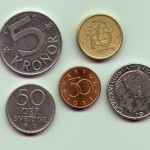Gold made a steep plunge during the Asian session and extended losses in the early European session after upbeat U.S. economic data on Tuesday supported Feds intentions to taper its bond purchasing program, thus driving the dollar up. Gold fell to a 33-month low and silver touched its lowest level since August 2010.
On the Comex division of the New York Mercantile Exchange, gold futures for August delivery traded at $1 245.35 at 7:47 GMT, down 2.33% on the day. The precious metal moved within days range of $1 243.65 and $1 277.25. Gold settled 0.72% lower yesterday and 1.25% on Monday, extending last weeks 6.8% loss.
Better than expected economic data on Tuesday delivered a shock to gold prices as steady recovery signs are in track with Feds intentions to decelerate its Quantitative Easing program. The bond purchasing is expected to be tapered within the second half of the year and brought to an end mid-2014, if key indicators meet projections, said Ben Bernanke after the latest FOMC meeting. The dollar gained against its major peers yesterday with the dollar index settling 0.22% higher on the day. After rallying for 12 consecutive years, gold tumbled in 2013, pressured by concern of a premature QE deceleration, losing 25% of its value over the first two quarters. Assets in the SPDR Gold Trust, the largest bullion-backed ETP, declined 28 percent this year, erasing $34 billion from the value of the fund.
An exit from the monetary easing program will deliver a massive shock to gold prices as the precious metal is used mainly as a hedging strategy against inflationary effects. Such can arise as a result of a loose monetary policy, like Quantitative Easing. However, last week U.S. economic data showed the inflation rate in the world’s largest economy was low and stable, which devalued the precious metals. Core CPI, which excludes the more volatile energy and food prices, rose only by 0.2% in May, compared to 0.1% in April and met projections. On an annual basis Core Consumer Price Index also met expectations and remained the same compared to May 2012 at 1.7%. CPI for May was even lower than anticipated and stood at 0.1%, below forecasts for a 0.2% increase.
David Lennox, an analyst at Fat Prophets, Sydney said for Bloomberg: “The raft of figures that came out of the U.S. all pointed to a stronger growth pattern, which pushed the U.S. dollar higher. That’s two nails in the coffin for gold: a stronger U.S. dollar and expectations that quantitative easing will be scaled back.”
The U.S. Commerce Department said yesterday that Durable Goods Orders stood at 3.6% for May, 0.6% higher than the 3% forecast, equaling April’s 3.6% revised reading. Core durable goods (Durable Goods Orders ex Transportation), which exclude the more volatile transportation items, outperformed expectations of a decrease to 0%, standing at 0.7%. Last month’s revised reading stood at 1.7%. Core Durable Goods ex Defense also exceeded anticipations, surging to 3.5%, compared to the 2.7% forecast and April’s 2.5% revised reading. Meanwhile, the S&P/Case-Shiller Composite-20 Home Price Index showed home prices jumped to 12.05%, surpassing 10.06% expectations and April’s 10.85% revised figure.
Meanwhile, the U.S. Census Bureau said New Home Sales exceeded forecasts of a decrease to 0.460 million from last month’s 0.466 reading. May’s indicator unexpectedly rose to 0.476 million, supporting previous data for economic recovery.
The Conference Board, a market research group also reported that Consumer Confidence in the U.S. reached a five-year high, going well above expectations. CCI stood at 81.4 for June, compared to 76.2 for the preceding month and surpassing projections of 75.
Investors are now looking ahead into the upcoming key U.S. economic data. The final Q1 GDP reading is due at 10:30 GMT. It is expected to show no change compared to the same quarter last year, standing at 2.4%. Consumer Spending (Personal Consumption Expenditures) for Q1 will likely stand unchanged at 3.4%, compared to Q1 2012. Core Consumer Spending for Q1 should be at 1.3%, the same like last year. On Thursday, Personal Income, Personal Spending, Core Consumer Spending for May, Pending Home Sales and Initial Jobless Claims are expected to provide information whether the U.S. economy is reaching its recovery goals and remain on track with Feds expectations.
Elsewhere on the precious metals market, silver, platinum and palladium are all on the red side of the scale. Silver futures for September delivery lost 3.64% on the day, trading at $18.840 an ounce. Platinum October futures fell 1.81% to stand at $1 329.55 an ounce at 7:45 GMT, ranging between days high and low at $1 354.35 and $1 320.45 respectively. Palladium for September delivery slipped 1.61%, trading at $658 an ounce at 7:46 GMT. The metal ranged between daily high and low at $667.40 and $655.20 respectively.





